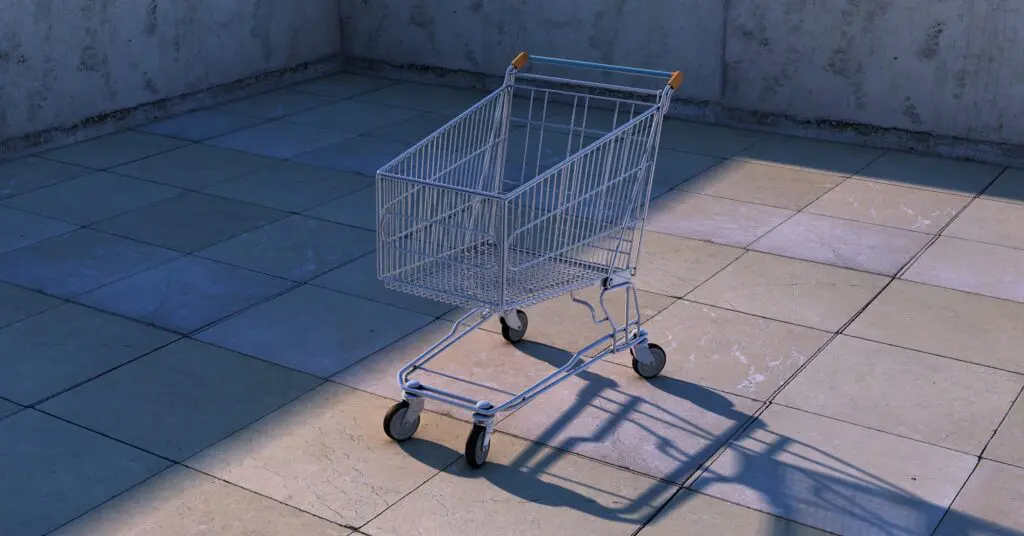It’s a scenario that keeps business owners up at night: a critical supplier shipment is delayed indefinitely, a marketing campaign goes viral and creates a massive, unexpected spike in demand, and suddenly your shelves are bare. The result is lost sales, angry customers, and a hit to your reputation. The flip side isn’t much better—a warehouse overflowing with unsold goods, tying up cash that your business desperately needs elsewhere. Buffer inventory is the strategic tool smart businesses use to protect themselves from this volatility, acting as a crucial shock absorber in an unpredictable world. It’s not just “extra stock”; it’s a calculated defense.
What Is Buffer Inventory?
Buffer inventory, often called buffer stock, is the stock you deliberately hold to act as a cushion against unexpected shocks in supply and demand. Its primary job is to ensure that your operations can continue smoothly even when things don’t go according to plan. This is a deliberate, strategic decision, not just the result of accidental over-ordering.
Now, let’s clear up a common point of confusion. You’ll often hear the terms “buffer inventory” and “safety stock” used interchangeably. While they are closely related, there’s a subtle difference. Think of “buffer inventory” as the broad, overarching concept of holding stock to protect against uncertainty. “Safety stock” is the most common type of buffer inventory, specifically designed to guard against demand and supply variability. But as we’ll see, there are other kinds of buffers that serve different strategic purposes.
Why Buffer Inventory Is Crucial for Your Business
Maintaining the right level of buffer stock is a critical balancing act, but getting it right offers significant strategic advantages that protect your business from the inside and out.
To Mitigate Supply Chain Volatility
Your supply chain is full of potential disruptions. A key supplier might have production issues, a shipping container could be stuck at port, a batch of raw materials might fail a quality control check, or a geopolitical event could halt the flow of goods overnight. A well-planned buffer inventory acts as your safeguard. It allows your business to continue selling products and satisfying customers while you work to resolve these external supply issues, preventing a complete shutdown.
To Handle Demand Fluctuations
Your customers are not always predictable. A single large, unexpected order can wipe out your available stock. A seasonal peak might hit earlier or harder than you forecasted. A successful marketing campaign or a mention from an influencer can lead to a sudden sales explosion. Buffer stock is what prevents these positive events from turning into a negative customer experience. It ensures you have products on hand to meet that surprise demand, capturing sales you would have otherwise lost.
To Optimize Production and Operations
Buffer stock also plays a crucial role in smoothing out your own internal operations. This is where decoupling inventory comes in. Imagine a multi-stage assembly line. If a buffer of components is held between stage A and stage B, a temporary breakdown at stage A doesn’t immediately stop stage B. The team at stage B can continue working by drawing from the buffer, preventing a bottleneck from halting the entire production line. This improves overall efficiency and output.
Key Types of Inventory Buffers
“Buffer inventory” is an umbrella term that covers different types of stock held for very specific reasons. Understanding these types is the key to managing your inventory effectively.
Safety Stock
This is the buffer everyone thinks of first. Safety stock is the “just-in-case” inventory you hold to protect your business against two main variables: higher-than-expected customer demand and longer-than-expected supplier lead times. It’s the extra stock that prevents you from having to tell a customer, “Sorry, we’re out of stock,” when your shipment is late or sales are booming.
Decoupling Inventory
As mentioned earlier, decoupling inventory is the stock held between different stages in a production or manufacturing process. Think of a car assembly line. The workstation that installs engines might work at a slightly different pace than the one that installs doors. A small buffer of cars with engines installed but no doors “decouples” these two stations, allowing them to work independently without one becoming a bottleneck for the other. This increases the entire system’s efficiency.
Anticipation Stock
Anticipation inventory, sometimes called strategic stock, is inventory you build up in advance of a known, upcoming event. This isn’t about protecting against uncertainty; it’s about preparing for a certainty. Common examples include stocking up on best-sellers before a major promotional event like Black Friday, building inventory before a planned factory shutdown for maintenance, or producing air conditioners all winter to meet the predictable seasonal demand in the summer.
How to Calculate Buffer Inventory Levels
Calculating your buffer inventory isn’t about guesswork; it’s about data. The right amount for your business will depend on a few key factors:
- Demand Variability: How much do your daily or weekly sales fluctuate? The more volatile the demand, the more buffer you’ll need.
- Lead Time Variability: How reliable are your suppliers? If their delivery times are inconsistent, you’ll need a larger buffer to protect against delays.
- Desired Service Level: What percentage of customer orders do you want to be able to fulfill from stock without delay? A 99% service level will require more buffer stock than a 90% service level.
As a practical starting point, many businesses use a standard safety stock formula:
Safety Stock = (Max Daily Sales x Max Lead Time) – (Average Daily Sales x Average Lead Time)
This formula calculates the stock needed to cover a “worst-case” scenario. For example, if your maximum daily sales are 50 units and the longest lead time you’ve experienced is 10 days, while your averages are 30 units and 7 days, your calculation would be (50 x 10) – (30 x 7) = 500 – 210 = 290 units of safety stock. While more advanced statistical methods exist, this formula is a solid foundation.
Strategies for Optimizing Buffer Inventory
The goal is not to have the most buffer stock, but the optimal amount. Too much ties up cash, while too little risks lost sales. Here are key strategies to find that perfect balance.
Improve Demand Forecasting
The better you can predict what your customers will buy, the less you need to rely on buffer stock to cover surprises. More accurate demand forecasting—achieved by analyzing historical sales data, accounting for seasonality and market trends, and using modern inventory software with predictive analytics—is the most powerful way to reduce your need for a large buffer.
Strengthen Supplier Relationships
Your suppliers are your partners in inventory management. The more reliable they are, the less buffer stock you need to hold to protect against their delays. Work on building stronger relationships by sharing your forecasts, establishing clear communication channels, and collaborating to find ways to shorten and stabilize lead times.
Adopt Lean Principles
It might seem counterintuitive, but lean methodologies like Just-in-Time (JIT) and buffer stock are not mutually exclusive. Modern lean thinking recognizes that eliminating all buffers can make a system fragile. Instead, the goal is to reduce waste and hold only the minimal, strategically placed buffers necessary to protect the system’s flow from disruption.
Leverage Technology and Software
You can’t manage what you can’t measure. Modern technology like Warehouse Management Systems (WMS) and Enterprise Resource Planning (ERP) systems are essential. They provide real-time visibility into your stock levels, can automate reorder points, and track key performance metrics, allowing you to manage your buffers dynamically with data, not just intuition.
Common Challenges and Risks of Holding Buffer Stock
While crucial, holding buffer inventory is not without its downsides. It’s important to be aware of the risks:
- Higher Carrying Costs: This includes the direct costs of storage space, insurance, security, and labor to manage the extra stock.
- Risk of Obsolescence: For products in fast-moving industries like tech or fashion, or for perishable goods, any excess inventory runs the risk of becoming worthless before it can be sold.
- Opportunity Cost: Every dollar tied up in inventory sitting on a shelf is a dollar that can’t be invested in marketing, new product development, or other growth areas of the business.
Buffer Inventory in Action: Industry Examples
Manufacturing
A car manufacturer is a perfect example. They use decoupling inventory between the engine assembly and final assembly lines to keep both running smoothly even if one has a minor stoppage. They also hold safety stock of critical electronic components that have long and unreliable lead times from overseas suppliers to prevent a shortage from halting the entire factory.
E-commerce and Retail
An e-commerce giant will build up massive anticipation stock of its best-selling electronics and toys in the months leading up to a major sales event like Prime Day or the holiday season. On a daily basis, they use safety stock for their most popular, consistently selling items to ensure the product page never has to display that dreaded “out of stock” message.
Finding the Right Balance
When managed correctly, buffer inventory is not a costly liability but a powerful strategic tool for building a resilient and customer-focused business. The “right” amount is never a static number; it’s a dynamic figure that should evolve with your company’s risk tolerance, the reliability of your supply chain, and the expectations of your customers. By moving from a reactive to a proactive approach, you can use buffer stock as a key lever to protect your business, keep your customers happy, and drive sustainable growth. Intuendi helps you strike the perfect balance, reducing excess while protecting against stockouts. Book a demo below to see how Intuendi makes it simple.






